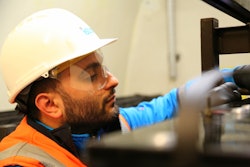The Sturgeon Bay Historical Society Foundation (SBHSF) has announced the commencement of Phase II in the restoration of the Teweles and Brandeis Grain Elevator, also known as the Door County Granary, beginning February 5. This phase will focus on restoring the interior, completing the exterior, adding a catering kitchen and public restrooms, and preparing the ground floor for occupancy.
Project Manager Nicole Matson highlighted the extensive preparatory work done, including design, engineering, permitting, and fundraising. Much of the Phase I work, like installing new pilings and restoring columns, was not visible to the community. Phase II promises more visible changes.
Greenfire Management Services, a Milwaukee-based firm with Potawatomi Tribal roots, will oversee the construction. Greenfire president Jeb Meier expressed pride in being part of a project with significant historical value. The firm plans to start work with repairs to the 19 wooden grain bins in February and March, followed by construction of the new addition and installation of siding, windows, and doors in April and May. Phase II is expected to complete by early August.
The Granary, built in 1901, is a significant historical structure. It played a crucial role in America's agricultural history, being part of the network that transported grain from the western states to markets in the east and Europe. Recognized as a unique American invention, these wooden grain elevators, once common in rural landscapes, are now rare, with the Door County Granary believed to be the last of its kind on the Great Lakes.
Once restored, the Granary will serve as a free, three-season museum and a venue for community and private events. SBHSF president Laurel Hauser mentioned the ongoing work on research and museum displays, along with plans for Phase III, which will open the upper levels to visitors.
The project has garnered significant support, including funding from the USDA Rural Development, the 1923 Fund, the David L. and Rita E. Nelson Family Fund, the National Trust for Historic Places, the Wisconsin Economic Development Corporation, and others. The SBHSF is also seeking additional support in various forms, including volunteers, donations, and artifacts.
The foundation anticipates a soft opening in fall 2024 and a grand opening in May 2025, with interpretive elements fully installed. For more information or to contribute, interested parties can contact the SBHSF or visit their website.

















